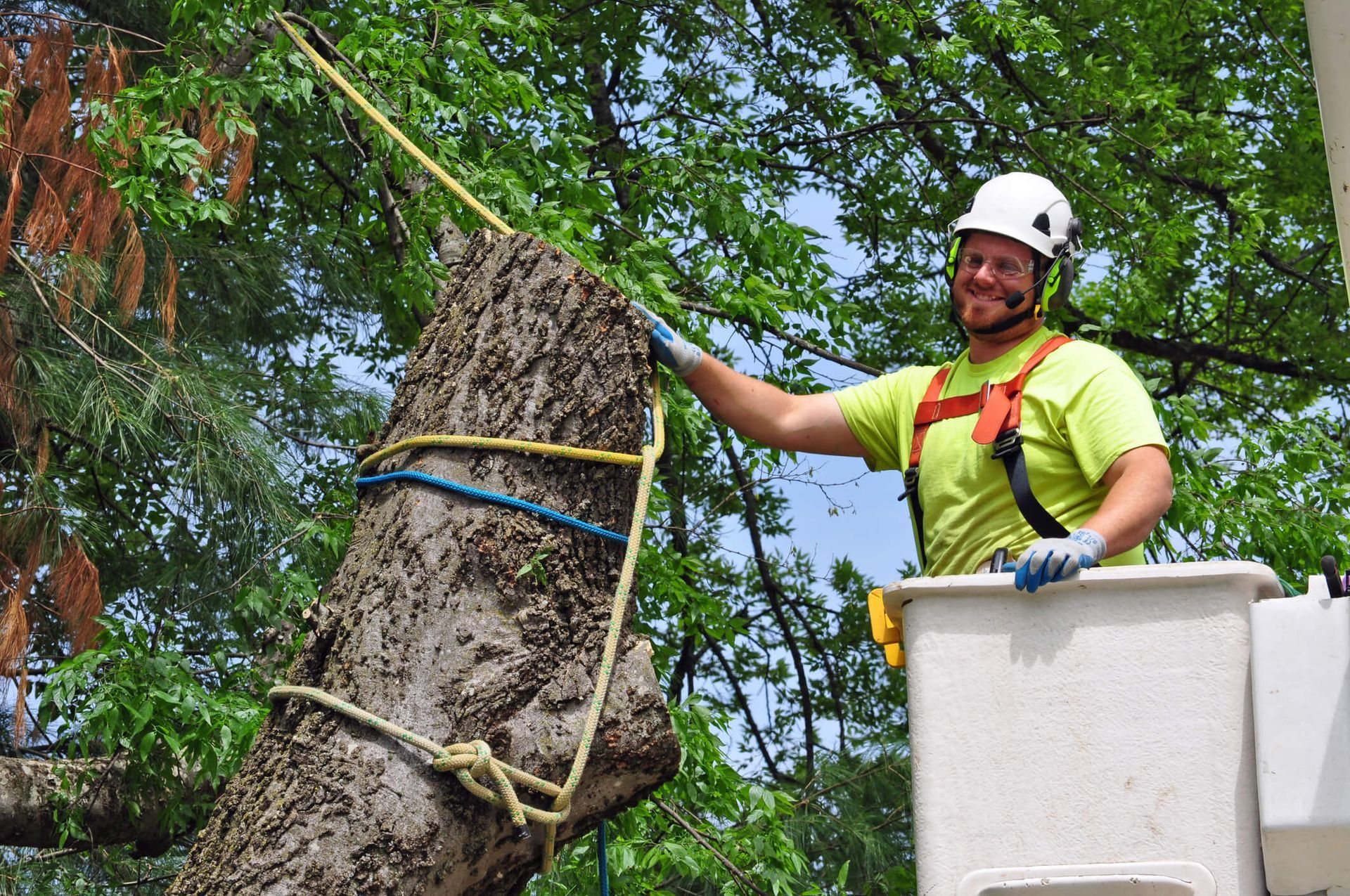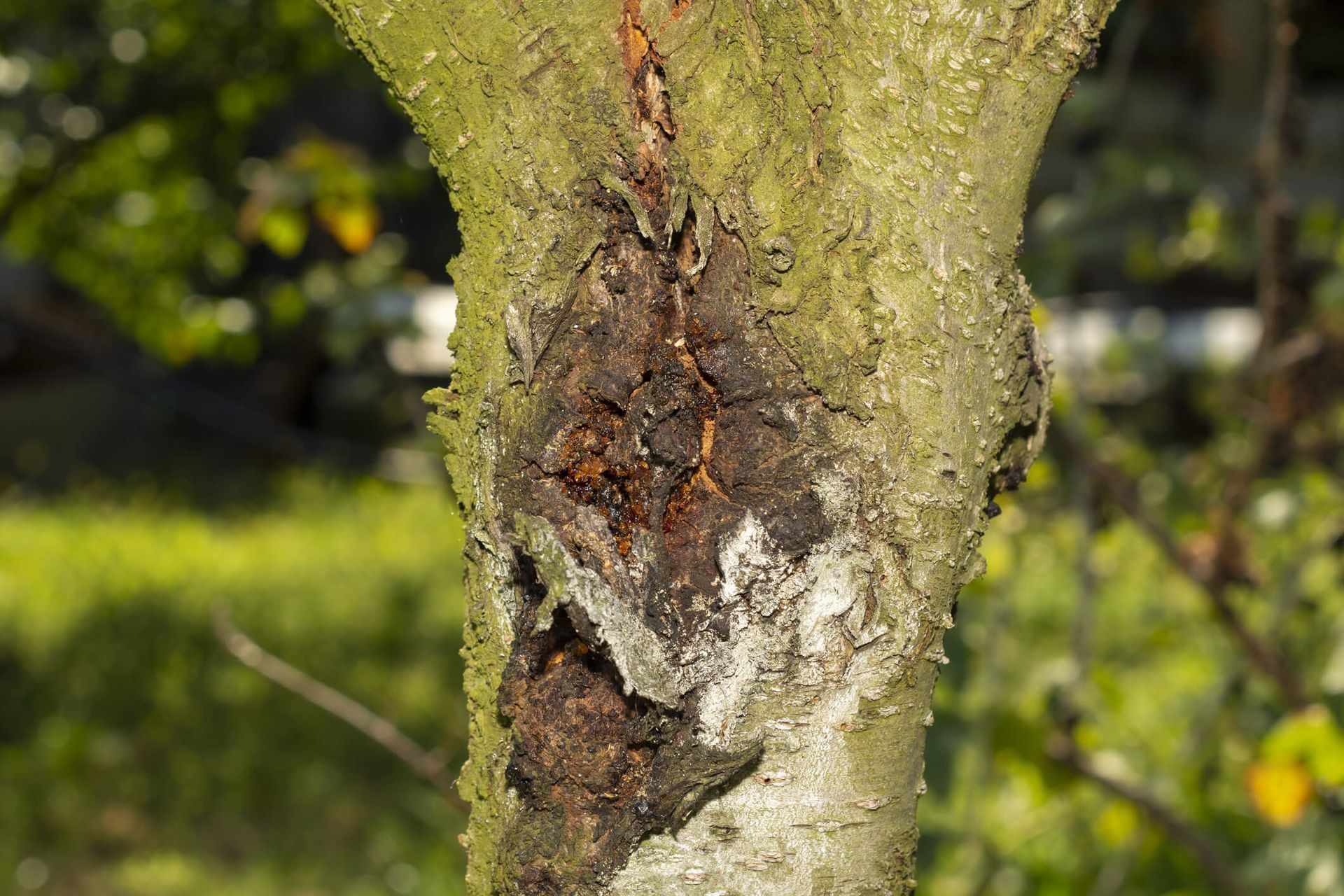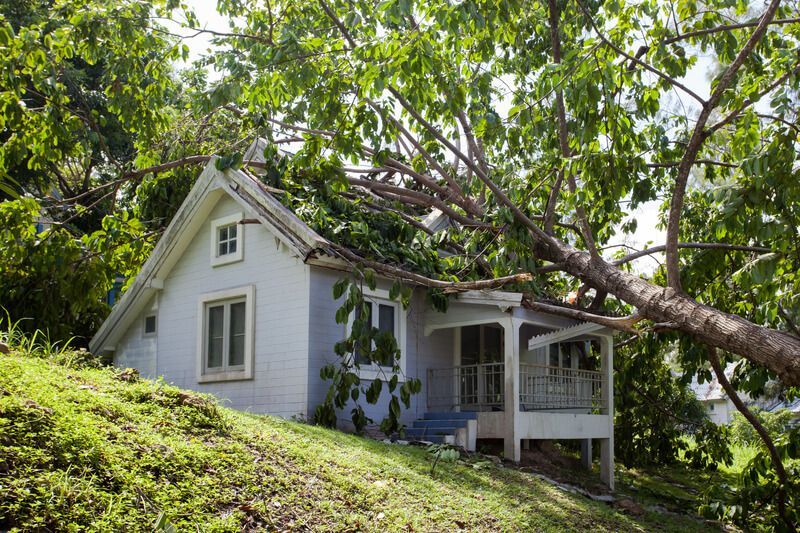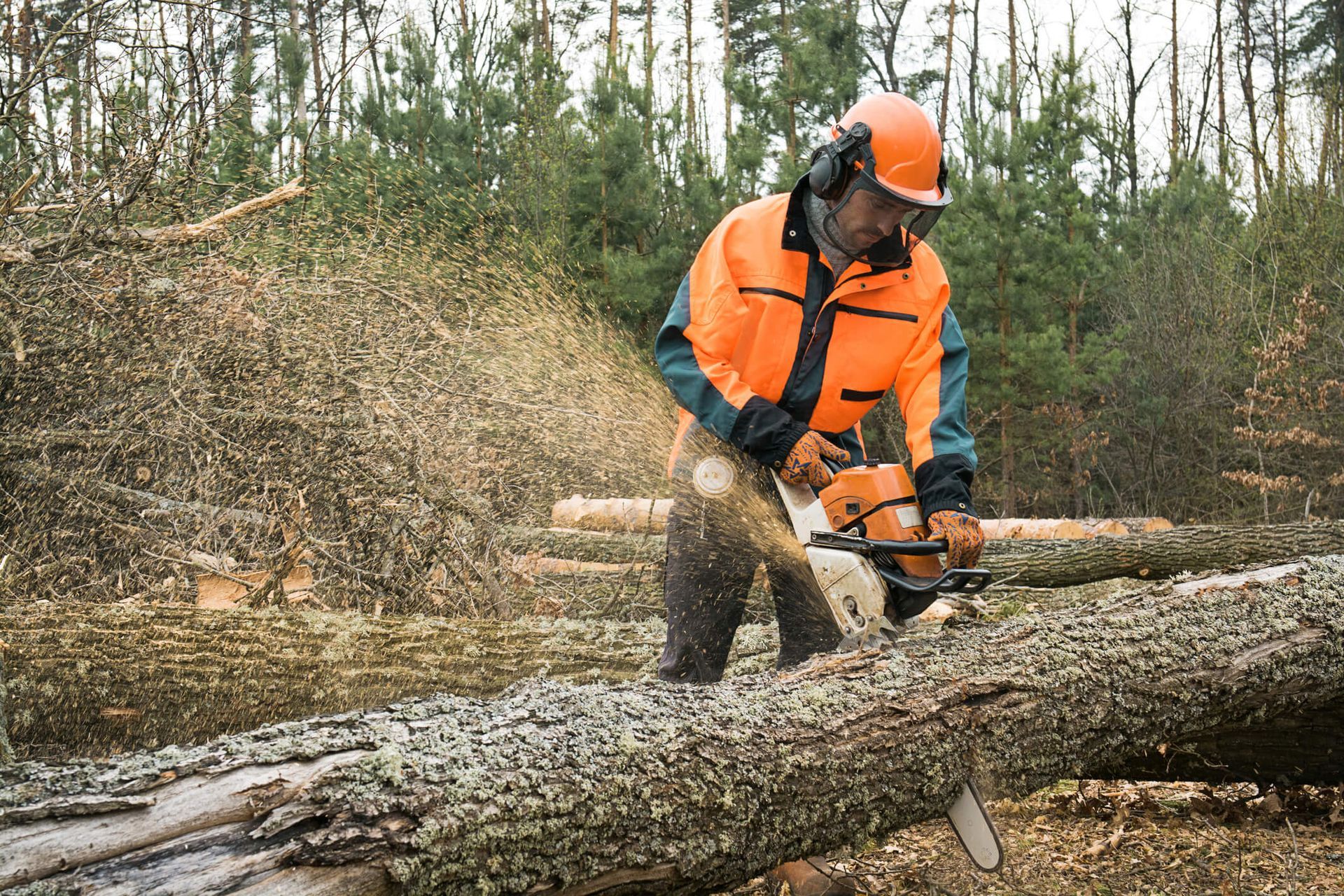How to Repair Lawn After Tree Removal
How to Repair Lawn After Tree Removal: A Step-by-Step Guide
Removing a tree from your yard can leave behind more than just a vacant location; it frequently leads to a damaged lawn with unattractive stumps, exposed roots, compacted soil, and a lot of problems to address. To tackle this job effectively, you may need to use machinery to aerate the soil, fill in the hole left by the tree, and apply compost to improve soil quality. Using starter methods like reseeding and proper watering can help jumpstart growth. Restoring your lawn takes work, but no matter the challenges, addressing these issues with the right approach will bring your landscape back to life. Here is a comprehensive guide to restore and revitalize your lawn.
Area Cleanup
Thoroughly sanitize the area where the tree was located before commencing lawn repair.
- Debris removal: Remove any remaining branches, roots, or wood fragments.
- Trunk grinding: To prevent obstructions during lawn repair, grind the trunk to ground level or lower if it persists.
- Grinding disposal: Utilize stump grinding as mulch in other areas of your garden or dispose of it appropriately.
Address the Soil
The soil is frequently nutrient-deficient and compacted due to tree removal. Healthy grass growth necessitates appropriate soil preparation.
- Loosen compacted soil: Use a horticultural fork or aerator to loosen compacted soil.
- Eliminate old roots: Dig out any remaining roots to establish a fresh foundation.
- Add topsoil: To enhance drainage and supply nutrients, apply a layer of fresh topsoil 2 to 3 inches thick.
Level the Ground
Even grass growth and the prevention of water gathering are guaranteed by a level surface.
- Complement deficient areas: Fill any depressions left by the tree's root system with topsoil or a soil-sand mix.
- The region should be raked: Achieve an even surface by raking the soil.
Soil Testing and Amendment
It is crucial to conduct soil testing, as tree roots deplete the soil with essential nutrients.
- Kit for soil testing: Assess the pH and nutrient levels of the soil.
- Adjust as necessary: To ensure nutrient balance, adjust the pH by adding lime or fertilizers high in nitrogen, phosphorus, and potassium.
Selecting the Appropriate Grass Seed or Sod
Choosing the appropriate grass species for your area's soil and climate conditions is imperative.
- Seed: For a cost-effective alternative, consider grass seed, which necessitates more patience.
- Sod: Utilize sod to achieve immediate results and expedite the establishment of a lawn.
Water and Plant
To establish new vegetation in the repaired area, follow these steps:
- Plant seeds or install sod: Spread grass seed evenly or roll out sod over the leveled soil.
- Lightly cover: To safeguard grass seed from wind and birds, cover it with a thin layer of topsoil or straw.
- Water regularly: Consistently water the soil to ensure that the vegetation is established.
Maintain and Supervise
Proper care will guarantee the long-term success of the grass once it has begun to develop.
- Mowing: Before the initial cut, delay until the vegetation has reached a height of 3–4 inches.
- Fertilization: Increase growth by applying a slow-release fertilizer.
- Weed control: Controlling vegetation is crucial to prevent it from competing with the new grass.
Additional Tips
- Sunlight considerations: There may be an increase in sunlight in areas previously shaded by trees. Therefore, selecting a grass variety that is tolerant of the sun is recommended.
- Patience is key: Depending on the severity of the damage and the method employed, the duration of a complete lawn restoration can vary from several weeks to months.
- Engage professionals: For large areas or extensive damage, it is advisable to engage the services of lawn care professionals to guarantee a smooth restoration process.
It may appear daunting to repair your lawn after tree removal, but with the appropriate procedures, your yard will be restored to its former lushness and vibrancy. Properly adding and maintaining plant-appropriate vegetation is crucial for an enduring transformation.

Conclusion
To preserve your yard's aesthetic appeal and functionality, it is imperative to rejuvenate your lawn following tree removal. The bare, damaged spots left by the tree stump can be transformed into a thriving patch of greenery by addressing soil compaction, aerating the soil, and composting to improve soil health. Carefully sowing new grass, selecting the top grass species for the season and space, and providing consistent watering and ongoing care will ensure successful growth. Seeking expert advice on addressing specific issues can enhance the appearance of your lawn. Although the process takes time and effort, the result—a lush, healthy lawn—is well worth it. With proper techniques and patience, you can restore your yard to its former glory.
Frequently Asked Questions
What is the most effective method for preventing animals or birds from disrupting the newly planted grass?
Cover the seeded area with sawdust, light mulch, or netting to prevent birds or animals from eating the seeds.
Is it possible for the vegetation to regenerate independently after removing the tree?
In certain instances, grass may regrow naturally; however, it is exceedingly unlikely that it will be uniformly or healthily rooted, absent appropriate soil preparation, leveling, and fertilizing. Proactive measures guarantee superior outcomes.
What is the best course of action for the large roots that remain after removing the tree?
Excavating and removing large roots is necessary to prevent soil leveling and vegetation growth from being impeded. If the removal process proves too challenging, consult a professional landscaper for help.
Is planting grass over the remaining wood particles permissible after stump grinding?
It is not advisable to sow grass directly over wood chips. Instead, remove as many chips as possible and apply a layer of fresh topsoil to establish a nutrient-rich foundation for the grass.
What should I do with the remaining wood fragments from the stump grinding?
Wood chips can be repurposed as mulch for garden plots, pathways, or around existing plants. However, it is advisable to remove them from the repaired lawn area, as they can impede grass development by reducing the amount of nitrogen in the soil during the decomposition process.
What is the most effective method for preventing the area from declining over time?
Before planting vegetation, lightly compact the high-quality topsoil used to fill the area. If the area settles, it is important to monitor it and add additional soil.
What equipment is required to repair my lawn?
Basic gardening instruments, including a rake, garden fork or aerator, shovel, wheelbarrow, and grass seed or sod, are required. Additionally, fertilizer and a soil testing device may prove advantageous.
Is it necessary to conduct a soil test before sowing grass?
Certainly, soil testing is advised to ascertain nutrient deficiencies and pH levels. Testing guarantees that the soil is conducive to the development of healthy grass.
After the eradication of trees, what is the impact on the soil's nutrients?
Tree roots frequently deplete the soil of nutrients, resulting in a decrease in fertility. To restore the health of the soil, fresh topsoil and fertilizers high in nitrogen, phosphorus, and potassium can be incorporated.
Can we substitute replanting grass with artificial turf?
Indeed, artificial turf is a low-maintenance alternative. It is a practical option for particular householders, as it eliminates the necessity for watering and mowing. However, it may necessitate professional installation.
Expert Guidance on Lawn Repair After Tree Removal
Have you recently removed a tree and are now confronted with a lawn that is either damaged or barren? At SYS Enterprises, we are dedicated to offering expert guidance and solutions for restoring your lawn after removing a tree. Our team comprehends the distinctive obstacles accompanying restoring your yard, including the revitalization of depleted soil and the flattening of uneven ground. Whether you are confronted with the necessity of replanting vegetation, compacted soil, or leftover roots, we are available to provide comprehensive guidance throughout the process.
We develop a customized lawn repair strategy for your property, taking into account various factors, such as soil health, grass type selection, and variations in sunlight. We offer comprehensive programs to restore your lawn to its maximum potential, whether you are a homeowner seeking to revitalize your yard or a business owner seeking to maintain a professional landscape.
All-Inclusive Lawn Restoration Services
Your one-stop solution for post-tree removal lawn maintenance is SYS Enterprises. We provide the following services:
- Stump Removal and Stump Grinding: Guaranteeing a level surface to establish new growth.
- Soil Testing and Amendment: Restoring nutrients and harmonizing pH levels.
- Grass Seeding or Sod Installation: Selecting the right grass type for your yard.
- Erosion Control: Preventing soil loss and assuring a stable foundation.
- Ongoing Lawn Maintenance: Fertilization, irrigation schedules, and weed prevention comprise ongoing lawn maintenance.
Our expertise enables you to circumvent prevalent challenges, including vegetation infestations, poor soil health, and uneven growth. We collaborate closely with you to guarantee that your lawn is verdant, healthy, and in harmony with your landscape.
What is the Advantage of Selecting SYS Enterprises?
Our certified arborist possesses extensive experience in lawn care and landscaping. We are dedicated to providing our clients with exceptional results while simultaneously reducing their tension. We guarantee that your lawn repair project is executed with precision, care, and meticulous attention to detail from the outset.
Contact SYS Enterprises today to arrange a consultation and initiate the process of restoring your lawn. Allow our professionals to transform your yard into a thriving, aesthetically pleasing area that you will be able to appreciate for years to come.


